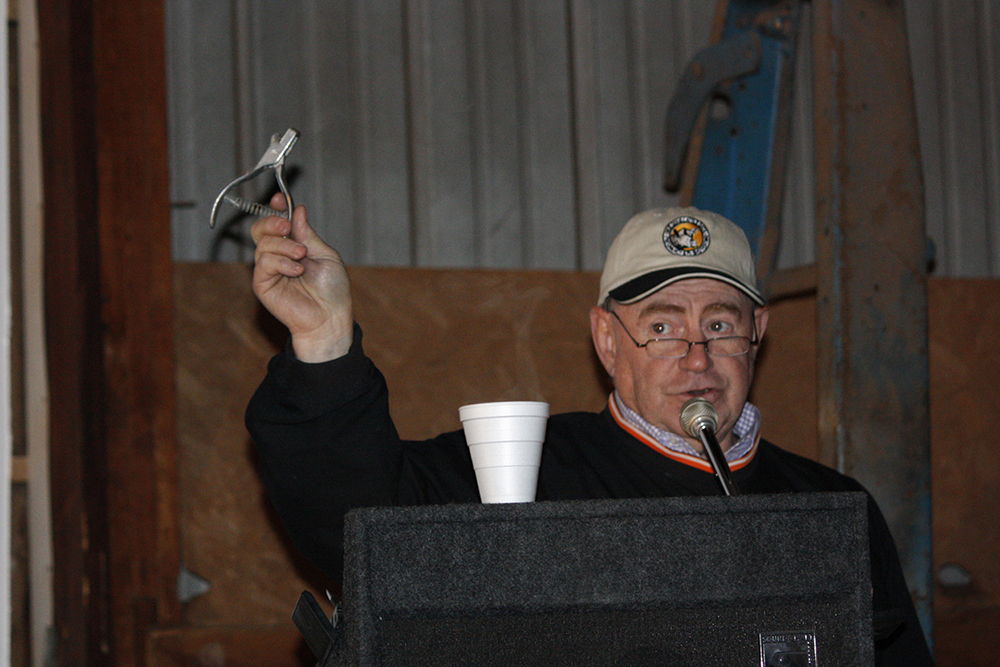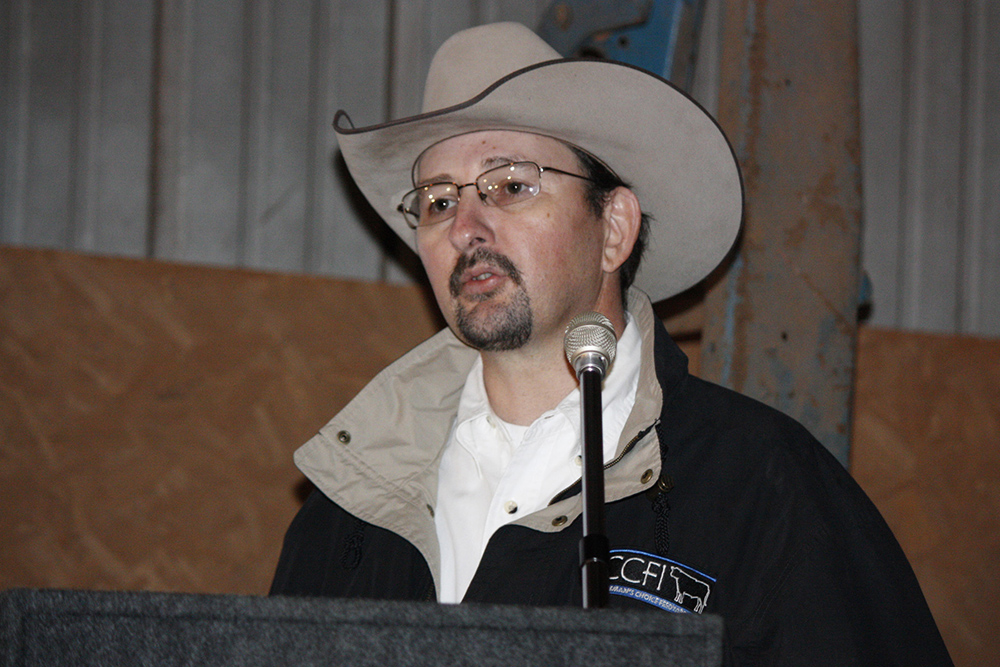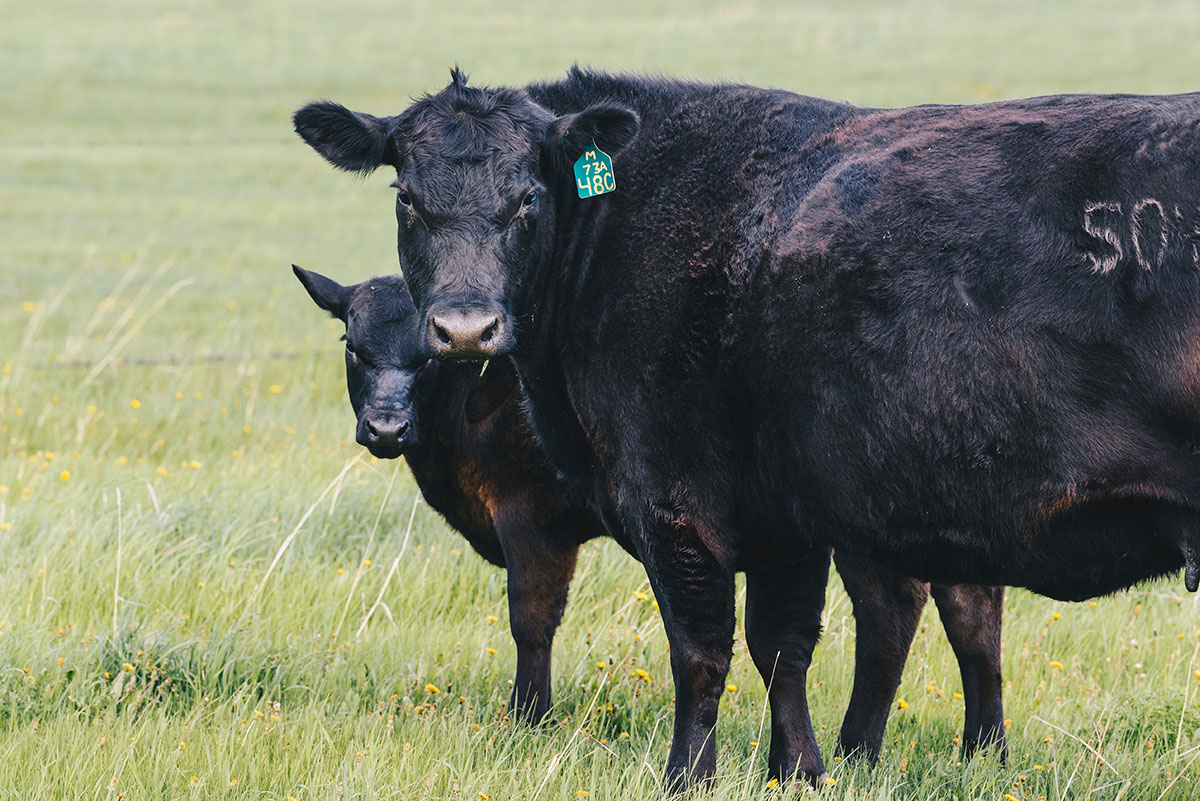
How to keep the herd
Drought or land competition may limit grazing opportunities, not creativity
by Jill J. Dunkel
The drought has eased in places, but it persists in 40% of the U.S. and another 10% could revert if seasonal rains stay away this summer. That outlook from the USDA Drought Monitor has many ranchers short on grazing or water at a crossroads. Do they sell out with hopes of getting back in once the drought subsides? Or do they spend the money to feed and water their cows to preserve the genetics?
“It’s a scenario we’ve heard an awful lot about,” says Vern Anderson, Extension animal scientist at North Dakota State University. “Farmers and ranchers are scrambling for ways to keep their cowherds.”
From there to Texas, weather, feed prices and land values combine to inspire solutions that include drylotting the herd. Although feeding cows everything they eat sounds expensive, Anderson says it can work.
“The bottom line is cows are very adaptable, given a little bit of time. If you feed to meet their nutrient requirements, you can be very creative in what you feed,” he says.
John Perrin, Hereford, Texas, is looking down the barrel of a three-year drought.
“In 2011, I sold almost everything,” he says. “I weaned early. The older cows went to the packer. The younger cows I sold as bred. The only thing I kept was one load of bred heifers, and I kept them in my pens for a while.”
His decision to keep bred replacements instead of young cows was simple – they take up less space and require less feed and water. Using his vertical mixer to grind farm-grown hay with wet distillers grains, Perrin fed the heifers in troughs or on the ground. As time went on, he also grazed failed wheat and milo, as well as CRP ground opened due to drought.
“I was able to keep my genetics without having to start completely over. If you like your genetics, you should like your heifer calves. I knew I was looking at a couple of years before I had a calf crop to sell, but I also figured I was looking at a couple of years before I had grass,” Perrin says.

Sacrificing a small pasture or trap to confine a herd, they could be supplemented like in a drylot, Anderson says. Feed—whatever it is—can be placed in different locations there, and cows still have a little room to roam.
“Cows are very flexible,” he adds. “We’ve looked at a lot of products including distillers grains, wheat, barley malt, sunflower meal, all kinds of screenings. The first time we offered our cows straw for roughage, they turned up their noses at us, but after two days, they decided it wasn’t so bad.
“Meet their requirements in whatever form you can, as cheaply as you can,” Anderson says.
One option is feeding a concentrate ration every other day, and keeping a low-quality roughage available at all times.
“Roughage can be hay, straw, stover, any biomass you have,” Anderson says. “Feeding every other day reduces the labor to feed cows, but it is not infrequent enough to affect the rumen.”
And it has some positive social implications on the cows.
“When we fed every day, the cows would be anxious as soon as the tractor started. But when we fed every other day, we noticed a reduction in the anxiety. It kept them from getting all excited, jostling and trying to get to us.”
Tom Williams, manager of Chappell (Neb.) Feedlot, has fielded calls from producers asking to him to save pen space for cows.
“The grazing season is going to be short this year, and we are prepared to feed cows for customers,” he says. “I tied up way more roughage inventory than usual, and we can feed a silage-based ration. We also have some bigger pens where the cows could get some exercise.”
While pasture resources are short for many, water can be another challenge.
Joe Howard Williamson, Archer City, Texas, embraced new ways to get water to his commercial Angus cows last summer, and he’s ready to do it again if necessary.
“We were slightly understocked, so grass wasn’t the big issue. But we didn’t have the hard rains necessary to run water into our dirt tanks [ponds]. Tanks were low and cows would bog up to their knees or deeper trying to get a drink,” he says.

Like Perrin, Williamson’s creativity let him preserve the herd. He ranches in an area with limited underground water, and local municipalities were unwilling to sell bulk water for livestock consumption.
“I had a fresh spring on one part of the ranch, and I hauled tanker-trucks of water out of the spring into dirt tanks in dry pastures,” he says. Williamson also tapped into a water line that ran through several pastures, placing large, metal water troughs on floats where needed. This gave his cows access to fresh water, and he wasn’t as concerned with cows getting stuck in the mud in his dirt tanks.
He also found other fresh springs just underground on his ranch.
“I was riding through pastures, and I’d find a strip of green grass. One day I decided to dig up one of those areas, and the next day the hole was full of water,” he explains. “We dug out a hole about the size of two pickups and it kept the cows watered in that pasture throughout the summer. It probably wouldn’t water them year-round, but it bought us some time until we received a little rain.”
Williamson said the drought made him look beyond traditional answers and see what resources he might have right under his nose.
“I didn’t want to sell out if at all possible,” he says. “I worked for 20 years to build my Angus genetics in this herd, and I didn’t like the idea of starting over.”
NOTE: North Dakota State University’s publication on drylotting beef cows is available at: www.ag.ndsu.edu/pubs/ansci/beef/as974.pdf
You may also like
You, Your Cows and Their Feed
Expert guidance from Dusty Abney at Cargill Animal Nutrition shares essential strategies for optimizing cattle nutrition during droughts, leading to healthier herds and increased profitability in challenging conditions.
Marketing Feeder Cattle: Begin with the End in Mind
Understanding what constitutes value takes an understanding of beef quality and yield thresholds that result in premiums and/or discounts. Generally, packers look for cattle that will garner a high quality grade and have excellent red meat yield, but realistically very few do both exceptionally well.
Magnum Feedyard Earns Certified Angus Beef Award
While Magnum hasn’t always had pens filled with Angus-influenced cattle, they’ve invested in infrastructure, improved quality-based marketing and sought better genetics. Their dedication to detail and employee appreciation drive their success to high-quality beef production.















